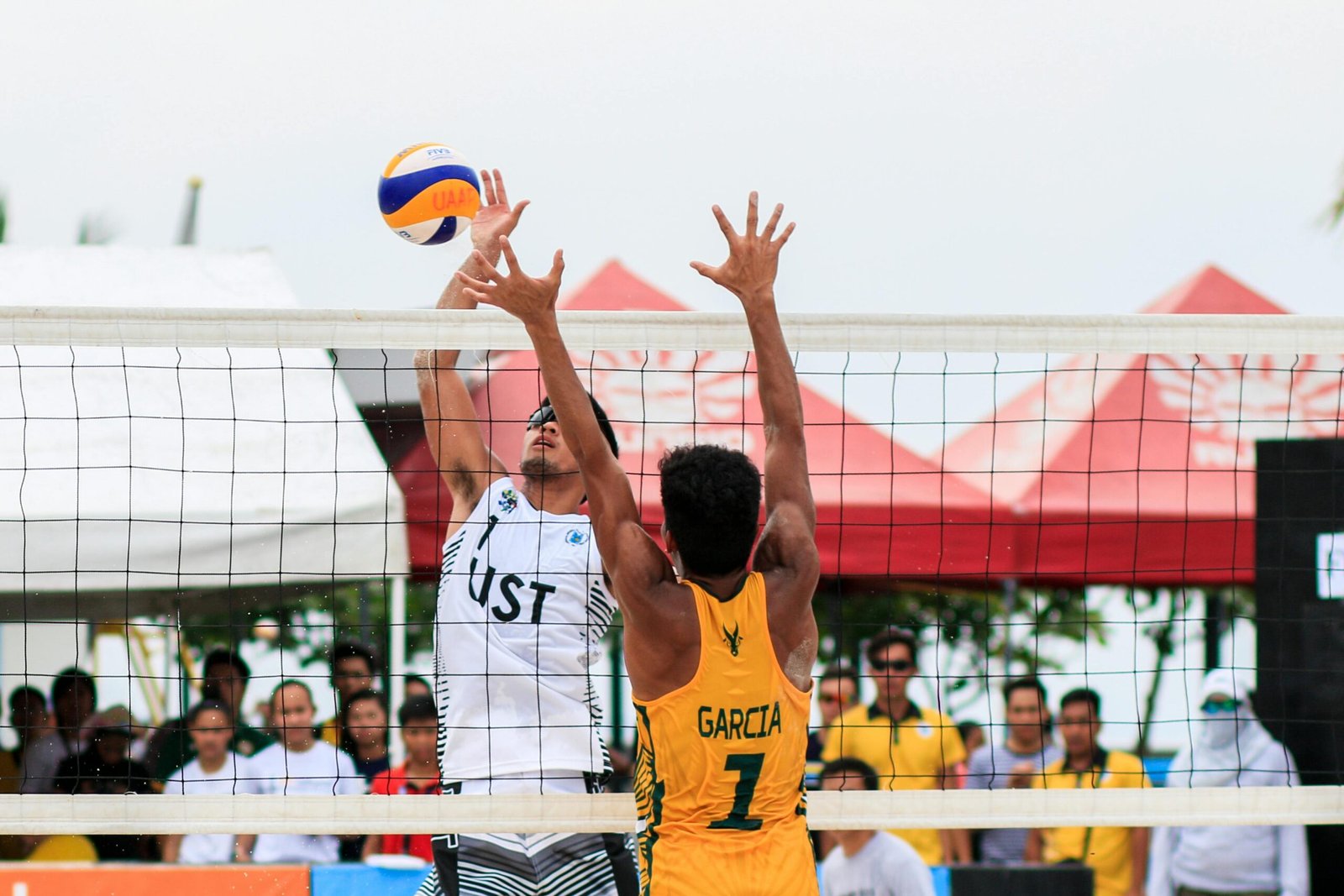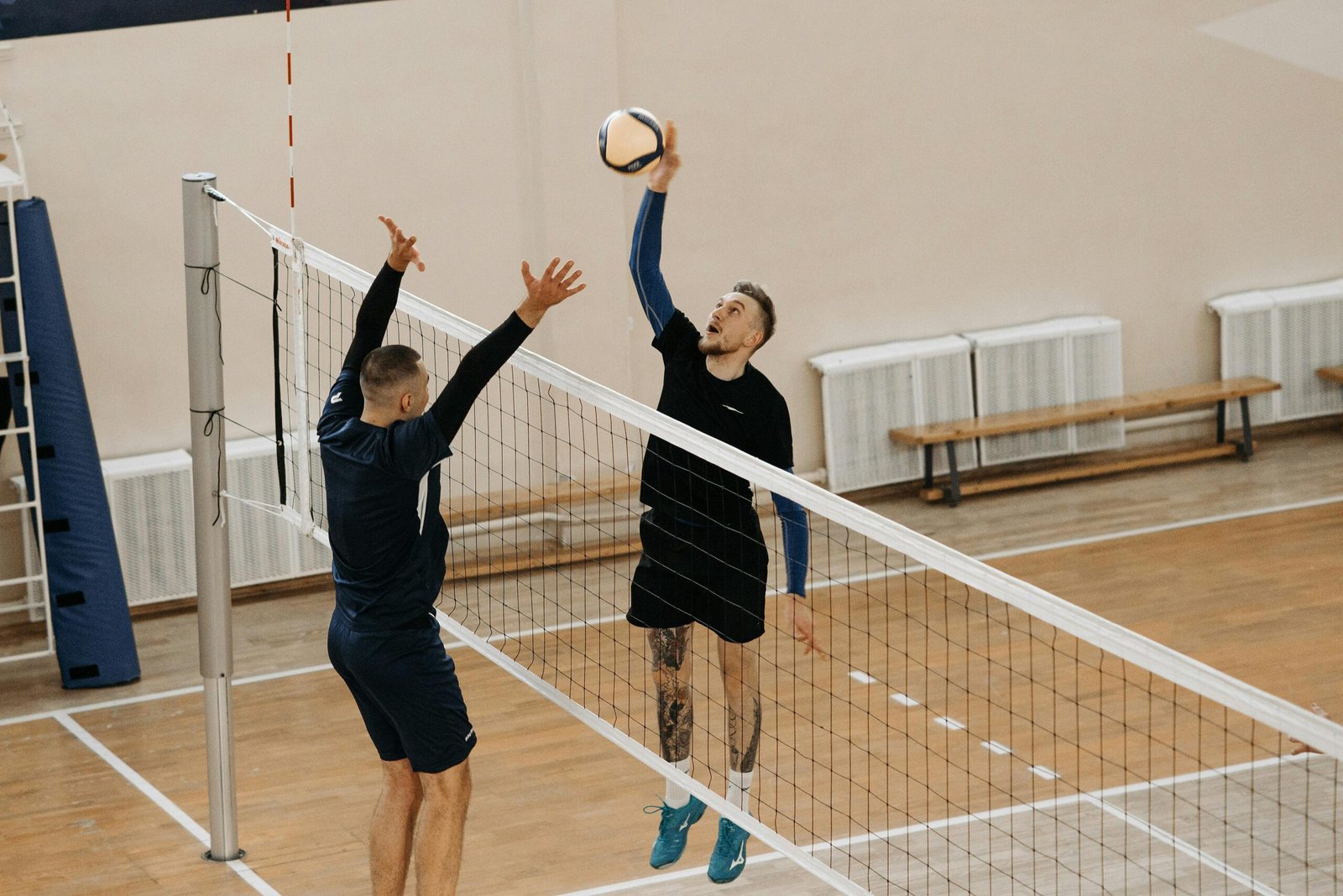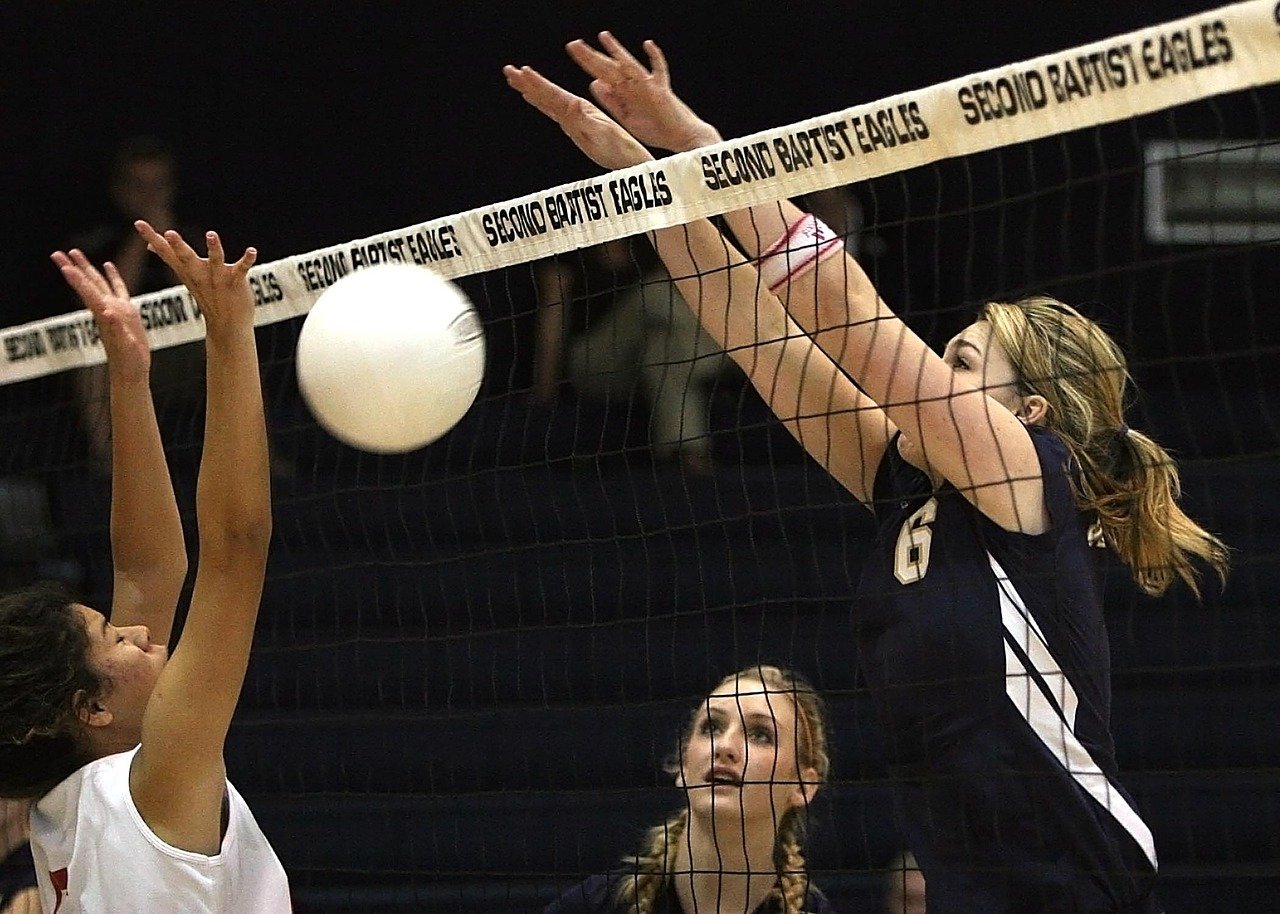Understanding the volleyball court’s dimensions and layout is fundamental for anyone involved in the sport, whether you’re a beginner player, coach, or an enthusiastic fan. The court’s design dictates how the game is played, where players position themselves, and how strategies unfold during a match.
This detailed guide covers everything you need to know about volleyball court sizes, markings, net heights, and differences between indoor and beach volleyball courts.
Standard Volleyball Court Dimensions
Indoor Volleyball Court
The official indoor volleyball court is rectangular, measuring:
- Length: 18 metres (59 feet)
- Width: 9 metres (29.5 feet)
The court is divided into two equal halves by a net placed exactly in the centre, so each team plays on a 9m x 9m half-court.
The surface is typically made of wood, synthetic material, or a cushioned sports floor designed to provide good traction and shock absorption.
Beach Volleyball Court
The beach volleyball court is slightly smaller:
- Length: 16 metres (52.5 feet)
- Width: 8 metres (26.2 feet)
The smaller size reflects the two-player teams in beach volleyball, requiring more running and covering space.
The surface is sand, which adds an extra physical challenge due to the unstable footing and softer impact.
Key Markings on a Volleyball Court
Knowing the court lines and zones is crucial for understanding gameplay and rules.
Centre Line
- The court is split into two halves by a centre line running under the net.
- Players cannot step over this line with any part of their body during play.
Attack Line (3-Metre Line)
- Also known as the 3-metre line or 10-foot line, it is drawn parallel to the net, 3 metres away on each side.
- It divides the front row from the back row.
- Back-row players cannot attack the ball from in front of this line but can jump from behind it to spike the ball.
Service Area
- The serving player must stand behind the end line (the back boundary of the court) to serve.
- They have the freedom to move laterally along the end line during the serve but cannot step on or over it before contacting the ball.
Boundary Lines
- The end lines mark the court’s length boundaries.
- The sidelines mark the width boundaries.
- The ball is considered in if it lands on or within these lines.
Substitution Zone
- Located along the sideline, next to the scorer’s table.
- This is where players enter and exit the court during substitutions.
Volleyball Net Specifications
The net divides the court and is a critical feature influencing play.
Net Height
- For men’s volleyball, the net height is 2.43 metres (7 feet 11 5/8 inches).
- For women’s volleyball, it is slightly lower at 2.24 metres (7 feet 4 1/8 inches).
- In co-ed or mixed leagues, heights may be adjusted accordingly.
Net Width and Length
- The net is 1 metre (3 feet 3 inches) wide.
- It stretches across the court’s width with an overhang of 0.25–0.5 metres on either side to allow proper attachment to poles.
Antennae
- Two vertical rods, called antennae, are fixed on the net’s edges.
- They extend 80 cm (31.5 inches) above the net and mark the lateral boundaries of the court.
- The ball must pass between the antennae to be considered in play.
Court Zones and Player Positioning
Front Row and Back Row
- The front row consists of the three players closest to the net on each team.
- The back row players stay behind the 3-metre attack line.
- Front-row players are primarily responsible for attacking and blocking, while back-row players focus on defence and serve reception.
Serving Position
- The server stands anywhere behind the end line, within the width of the court.
- They can move freely along this line to serve from different angles.
Libero Zone
- The libero often operates in the back row and is restricted from attacking or serving.
- They typically cover the court’s defensive zones and receive serves.
Differences Between Indoor and Beach Volleyball Courts
| Feature | Indoor Volleyball | Beach Volleyball |
|---|---|---|
| Court Size | 18m x 9m | 16m x 8m |
| Surface | Hardwood or synthetic floor | Sand |
| Team Size | 6 players per side | 2 players per side |
| Net Height | 2.43m (men), 2.24m (women) | Same as indoor |
| Environmental Factors | Controlled indoor environment | Outdoor conditions (wind, sun) |
| Attack Line | 3-metre line | No attack line (players can attack anywhere) |
Beach volleyball courts do not have an attack line, allowing players more freedom in their attacking options, but the sand and weather conditions create unique challenges.
How Court Dimensions Affect Gameplay
- Court size influences player movement and tactics. Indoor volleyball’s larger court requires more specialised roles and rotations.
- The net height challenges players’ jumping and timing skills.
- The 3-metre line forces strategic positioning for back-row attackers.
- In beach volleyball, smaller court size and only two players mean more versatile skills and endurance are essential.
Setting Up a Volleyball Court
If you’re setting up a volleyball court for practice or recreational play, here are the essentials:
- Measure and mark the court boundaries accurately.
- Ensure the net is set at the correct height for the players.
- Use boundary lines that are clearly visible.
- Have adequate space behind the end lines for serving and movement.
- Check the surface is safe, level, and provides good traction or footing.
Variations of Volleyball Courts
Apart from standard indoor and beach volleyball courts, there are adapted versions for different play styles and abilities:
- Sitting Volleyball Court: Smaller court size (10m x 6m) and lower net height (1.15m men, 1.05m women) for players with disabilities.
- Mini Volleyball Court: Often used for youth players, smaller courts help young players develop skills more easily.
- Grass Volleyball: Courts marked on grass fields, typically following standard indoor dimensions.
Why Knowing Court Dimensions Matters
For players, understanding court dimensions helps with positioning, timing, and tactical awareness. Coaches and referees rely on precise measurements to ensure fair play and compliance with regulations. For recreational players, it’s useful to replicate official dimensions for a more authentic playing experience.
Final Thoughts
The volleyball court is more than just a playing surface—it’s a carefully designed arena that shapes every aspect of the game. Knowing the official court dimensions and layout not only enhances your appreciation of the sport but also improves your ability to play and strategise effectively.
Whether you’re stepping onto an indoor court or the sandy beach, understanding the space and rules around the volleyball court is the first step toward mastering the game.



